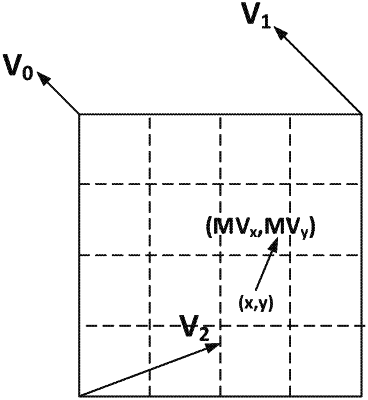| CPC H04N 19/137 (2014.11) [H04N 19/105 (2014.11); H04N 19/149 (2014.11); H04N 19/176 (2014.11)] | 20 Claims |

|
1. A video decoding method comprising:
for at least one current block in a video, determining at least one motion vector gradient from respective motion vectors of a plurality of neighboring sub-blocks neighboring the current block;
determining an estimate of at least one affine parameter for the current block based on an average of q-direction gradients of p-components of motion vectors of the plurality of neighboring sub-blocks, where p and q are each directions selected from the group consisting of x and y;
determining an affine motion model based at least in part on the determined estimate of the affine parameter; and
generating a prediction of the current block using the affine motion model.
|